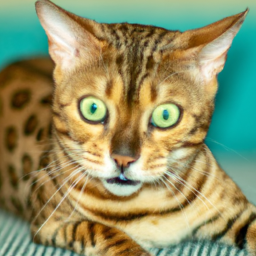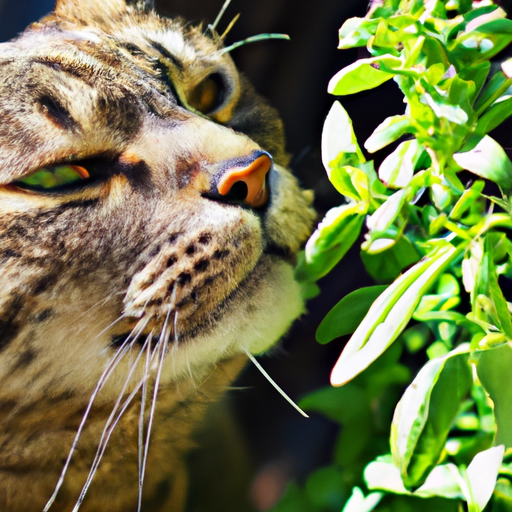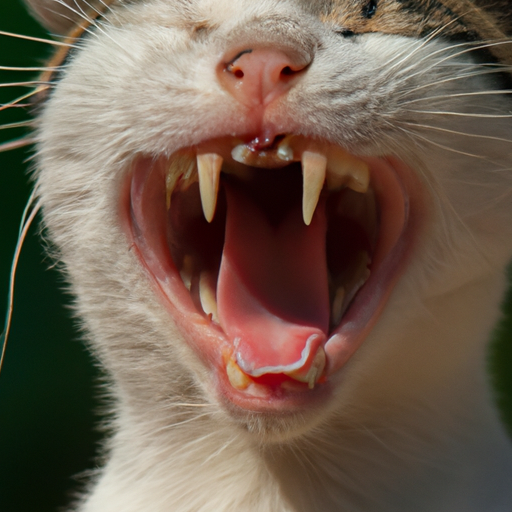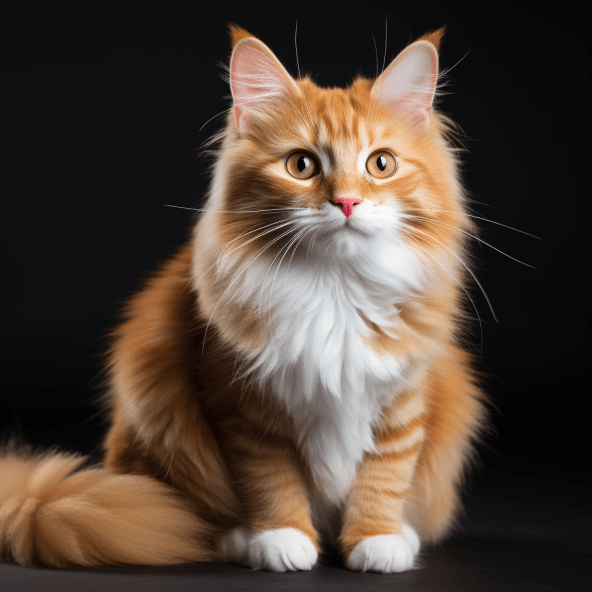Ocicat
Get ready to meet the Ocicat: a breed that irresistibly combines the allure of a wild jungle cat with the sweetness and loyalty of a domestic companion. From their distinctively spotted coat that hints at their wild pseudo-ancestry, to their undeniable love for interactive play and mental challenges, the uniquely appealing Ocicat stands out amongst a myriad of feline breeds. Whether you’re an existing aficionado or an intrigued newcomer, this article transports you into the world of Ocicats, shedding light on their history, personality traits, and what it takes to live harmoniously with such an extraordinary creature.
Origins and History of the Ocicat
The Ocicat is an enchanting breed with an equally captivating history. Let’s dive in, shall we?
Origins of the breed
Contrary to what you might think, the Ocicat is not a wild breed. It has its origins in the U.S and is actually the result of planned breeding between Siamese and Abyssinian cats, with a sprinkling of American Shorthair ancestry. Virginia Daly, an American breeder, initiated the Ocicat’s breeding in 1964 in an attempt to create an Abyssinian-pointed Siamese.
Development and recognition of the breed
As puppies, Ocicats were wildly appreciated for the spotted patterns that resembled a wildcat, thus earning their name, inspired by the wild Ocelot. Consequently, Daly continued the breed, and very soon Ocicats were displayed and adored in cat shows. After several years of persistence in breeding and perfecting, the Ocicat finally acquired full championship status from the Cat Fanciers’ Association (CFA) in 1987. Today, you’d find this breed is recognized by all major cat breed associations.
Role of the breed in history
Historically, the Ocicat doesn’t have any grand roles. Developed in the mid-20th century, it has mostly been admired for its wild appearance and sweet temperament. However, it has secured a place in the hearts of cat-lovers across the globe which can’t be undermined.
Physical Characteristics of the Ocicat
When it comes to physicality, Ocicats are a treat for the eyes. They have striking looks that ooze wild feline vibes.
General body structure
You’ll find that Ocicats have a well-muscled and significant body with a medium to large size. Males can often weigh up to 15 pounds, with females being generally smaller.
Coat colors and patterns
One of the defining features of Ocicats? Their coat. It’s short, sleek, and satiny. And oh, the spots! They possess striking spotted patterns, much like a wild leopard’s or jaguar’s. The spots can appear in various colors – chocolate, cinnamon, silver, and more.
Distinct features
The most distinctive feature of the Ocicat is without a doubt its flashy ‘wildcat’ spots. But did you know that they also have large, strong legs with oval paws? Not to forget the unique almond-shaped eyes that are usually in shades of green or gold.
Ocicat Temperament and Behavior
Let’s talk about their personality because believe me, Ocicat is a breed that is rich in character.
General temperament
While Ocicats might look wild, their temperament is anything but. They are loving, social, and playful creatures. Despite their confident exterior, they’re known for being very emotionally sensitive and having a strong desire for companionship.
Interaction with humans
These felines are very affectionate and enjoy human companionship. They don’t shy away from stealing your attention, and you’ll find them purring away on your lap or engaging you in playful activities.
Interaction with other animals
Here’s a fun fact: Ocicats are incredibly adaptable! They get along well with other animals, making them great companions for homes with other pets.
Health and Lifespan of the Ocicat
The health of your pet is as crucial as its personality. With proper care, the Ocicat can live a long and healthy existence.
Common health issues
Generally, Ocicats are a healthy breed. However, they might be susceptible to a few health issues like periodontal diseases or hypertrophic cardiomyopathy (a heart condition). It’s always a good idea to schedule regular vet check-ups.
Lifespan and factors affecting longevity
Ocicats are pretty hardy and, in general, have a lifespan ranging from 12 – 15 years. Factors that can impact their longevity include diet, exercise, and hereditary health conditions.
Genetic health concerns
Their genetic health is overall quite robust. Though, they can carry genes for dilated cardiomyopathy, a disease that causes thinning of the heart wall, leading to less efficient pumping. Regular screening can help detect this early.
Ocicat Care and Maintenance
Being a pet owner isn’t just about cuddles, it also requires ongoing commitment and responsibility.
Dietary needs
Ocicats benefit from a nutritionally balanced, high-protein diet. Make sure the food you provide is dealership in quality. Avoid overfeeding as overweight can lead to health complications.
Exercise requirements
This breed is active and playful. Ensure they get plenty of exercises, either through play or interactive toys, to maintain a healthy weight and keep them mentally stimulated.
Grooming tips
Their short and shiny coat is relatively low maintenance. A weekly brushing should keep the coat healthy and reduce shedding.
Breeding and Genetics of the Ocicat
Understanding the breed’s genetics can be fascinating, in addition to being vital for potential breeders.
Breeding considerations
If you’re considering breeding, remember Ocicats are generally late to mature, and queens are known to be excellent mothers. Ideally, work with an experienced mentor or reputable organization to ensure the best practices are followed.
Genetic traits and inheritance
Interestingly, the gene for the Ocicat’s spotted coat is dominant, so their distinctive look can easily be passed to subsequent generations.
Variation within the breed
While the breed standard specifies the preferred qualities, there can be variations within Ocicats. Some may have smaller spots, or different shades, but rest assured, each one is unique and special.
Ocicat as a Pet
Let’s talk about the Ocicat as a pet. Is it a fit for you and your family?
Suitability for families
With their friendly and playful nature, Ocicats make excellent family pets. They are particularly well suited for households with children and are known to form strong bonds.
Compatibility with other pets
Ocicats are highly sociable and get along well with other pets. They thrive in environments where they can interact and engage with others.
Special considerations for owning an Ocicat
They require lots of interaction and playtime, so you’ll need to ensure you have the time and energy to keep up. Also, due to their activity levels, providing ample space for them to run around is crucial.
Training and Socialization of the Ocicat
Training and socializing your Ocicat can significantly influence their behavior and overall wellness, so it’s absolutely crucial.
Training techniques
Ocicats are intelligent and responsive to training. Positive reinforcement methods usually yield the best results. Believe it or not, with a bit of patience, you can even teach your Ocicat to fetch or walk on a leash!
Socialization needs
Early socialization is critical for Ocicats. Exposure to different environments, people, and animals can facilitate their adaptability and sociability in the long run.
Behavioral issues and solutions
While generally well-behaved, Ocicats might resort to attention-seeking behavior if ignored. To prevent this, ensure they’re provided with enough interaction and mental stimulation.
Common Misconceptions and Myths about the Ocicat
There are several misconceptions surrounding this breed. Let’s break them down, shall we?
Misconceptions about the breed
A common misconception is that Ocicats are wild or aggressive due to their ‘wildcat’ looks. The truth is, they are entirely domestic with a lovable and affectionate nature.
Debunking myths
Some believe that Ocicats are crossbreeds of wild and domestic cats. This is a myth. They were bred entirely from domestic cats, despite their wild looks.
Fact vs Fiction
Finally, it’s important to separate fact from fiction. While the Ocicat does have a fierce appearance, it is really a warm, friendly, and outgoing breed that loves human companionship.
Rescue and Adoption of the Ocicat
If you’re considering adding an Ocicat to your family, here are some things you might want to know regarding adoption.
Finding Ocicats for adoption
Ocicats can sometimes be found in rescue and adoption agencies. You might also check with local breed clubs or online platforms dedicated to the breed.
Adoption process
The adoption process typically involves an application, followed by an interview to ensure a suitable home environment. It’s usually a straightforward process guided by the organization you choose.
Post-adoption care
Once you bring home your Ocicat, adequate care is vital. Regular vet check-ups, a healthy diet, plenty of exercises and a keep plenty of playtime will ensure your Ocicat stays blissful and thriving.
So, there you have it, an exhaustive guide on the Ocicat. This breed is a perfect blend of everything one could ask for – its unmatched beauty, tethered with a heart of gold, makes it truly a breed apart.







